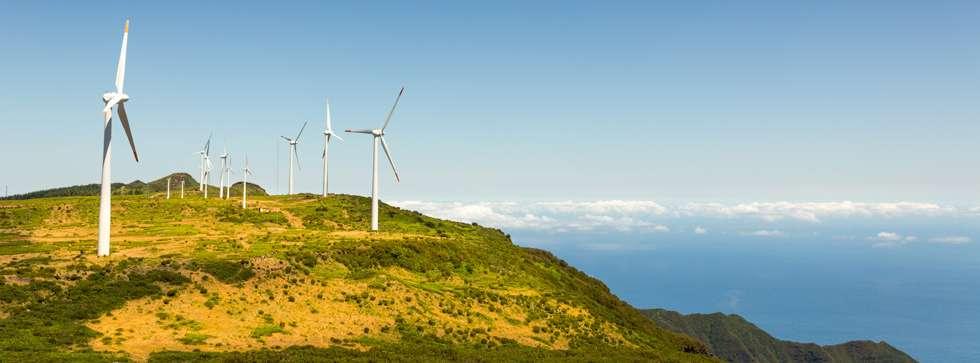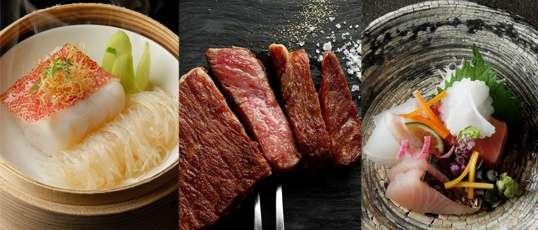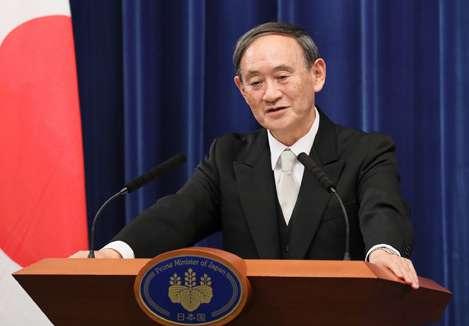
15 minute read
PARTNER CONTENT
RENEWABLE FUTURE
Suga administration outlines plans for a greener Japan
Advertisement
The Japanese government has pledged to reduce greenhousegas emissions to net zero by 2050, and the new target, unveiled by Prime Minister Yoshihide Suga in his first policy speech to the Diet on October 26, means Japan will finally catch up to the European Union (EU), which set the same goal last year.
Companies in industries such as electric power, automobiles, and steel will be expected to take strict measures to meet the international promise.
The government plans to put together concrete measures such as promoting renewable energy after Suga announced the net zero emission target in his first general policy address to the Diet since taking office last month.
In 2050, the total amount of emissions of greenhouse gases such as carbon dioxide, and the amount absorbed in forests and by other natural processes, will be reduced to zero.
In the past, the government has explained that it will reduce emissions by 80 percent by 2050, and that it will be virtually zero as early as possible in the second half of this century. The lack of a clear timeline has been criticized for being vague, and the government reluctant to deal with environmental problems.
The new target is the same as that already set by the EU. The Paris Agreement, an international framework for the prevention of global warming, has set a goal of “controlling the temperature rise from before the Industrial Revolution to within 1.5 degrees Celsius.”
To achieve the goal, the UK, France, and Germany have decided to abolish coal-fired power plants, which emit a large amount of greenhouse gases. Japan will revise its basic energy plan in the summer of 2021, but it is likely that a major revision will be required to meet the new target.
The current plan stipulates that, by fiscal year 2030, nuclear power generation will account for 20–22 percent of Japan’s electricity needs, renewable energy such as solar power and wind power will make up 22–24 percent, while 56 percent will come from thermal power generation, such as coal and liquefied natural gas.
KONO VOWS TO EASE RULES TO SPUR RENEWABLES
Taro Kono, Japan’s minister for administrative reform and regulatory reform, said that he will ease regulations to increase locations where wind and solar power can be developed to encourage private investment and achieve the government’s goal of enhancing renewable energy.
“I want to apply [administrative reforms] that would lead to economic growth,” Kono said in an online interview with Nikkei on October 16, specifically pointing out restrictions on the renewable energy sector. It was Kono’s first online interview with reporters since assuming the post in September.
Referring to a Nikkei survey of Japanese company presidents, he said that cutting red-tape bureaucracy in the renewable energy sector is one of the major things the business community expects the government to improve.
The government currently aims to make renewable energy its “main power source,” but “[they] cannot make investments because there are too many restrictions,” Kono said of companies. He also said that he had directed the ministries involved in the decision-making process to sort out the issues, with amending laws and easing regulations in mind.
Efforts to build solar panels on deserted farmland have been hampered by laws such as the Cropland Act and the Act on Establishment of Agricultural Promotion Regions, which restrict land use.
Many coastlines and ports suitable for developing wind power are either government-owned or public lands. The government will consider revising regulations to make it easier to obtain permission to use such space. If it becomes easier for companies to secure land, the overall cost of producing energy can be reduced, leading to a boost in renewable energy investments.
Also, the business community has been requesting that restrictions on foreign-flagged ships to transport offshore wind power components in Japan be eased.
Areas for developing offshore wind power are limited to those designated by the government, meaning that, even if there are promising locations in which companies want to invest, development cannot happen without the government’s green light. In other words, they can only invest in renewables by bidding for the few opportunities available on the country’s coastline.
Transmission lines have also been a bottleneck in developing renewables. Nuclear energy and coal-fueled power plants are given priority access to them, according to government policy. Thus, even if renewables increase, limited access to the lines restricts their availability.
In fiscal 2018, renewable energy accounted for 17 percent of Japan’s power generation, lower than the 30 percent in Europe. The country does not have many locations suitable for solar and wind power, due to its vast mountainous areas.
Renewable energy will continue to be positioned as the “major power source” in the government’s next strategic energy plan, which will be announced in 2021, as the government’s aims to generate 22–24 percent of power through renewables by fiscal 2030.
The Japan Association of Corporate Executives, or Keizai Doyukai, which is a powerful business lobby, made a recommendation to raise the target of renewable energy to 40 percent in July. Red-tape procedures, such as licensing paperwork and environmental impact assessments of land use, have made investment decisions difficult for the business community.
In Southeast Asian countries such as Singapore, governments have accelerated deregulation to develop new technologies. Kono said Japan is lagging behind in enhancing the use of drones and self-driving cars nationwide, adding, “It is a problem that Japan cannot become the frontrunner [in these areas] because of regulations.” Currently, in Japan’s special economic zones, experimental use of drones and self-driving cars is deregulated. But, Kono said, “It doesn’t make sense to do this just in special economic zones forever. I am preparing to review this.”
He also vowed to spearhead the government’s digitization efforts. “Technology is advancing,” he said. “I hope more people can take advantage of these opportunities.”

Share of Japan’s Electricity Generation by Energy Source (in percent)
60
40
20
0 1975 ’80 ’85
Petroleum ’90
Coal ’95
LNG 2000 ’05
Renewables ’10
Nuclear ’15
KAJIYAMA VOWS TO INCREASE OFFSHORE WIND, FUND BATTERY DEVELOPMENT
Hiroshi Kajiyama, Japan’s economy minister, said he wants to make renewable energy a “major power source” for the country and give it “a higher share” of electricity generated, in an interview with Nikkei Asia on October 13.
Kajiyama said he will “raise the share [of renewable energy] without setting an upper limit.”
Japan includes hydropower in the renewable energy category, but most of the growth is expected to come from wind and solar power.
To foster the development of renewable energy, Kajiyama mentioned the possibility of devoting a larger slice of the budget to research on advanced battery storage technology and offshore wind power, which has great potential in Japan as an archipelago.
He told Nikkei that the government plans to have 10,000 megawatts of offshore wind generating capacity by 2030.
The variability and higher cost of wind and solar power are major challenges for their development in Japan. To address these issues, Kajiyama said the government will consider financially supporting research and development of battery storage technology and solar panels.
For companies, “it is important to enhance the predictability” of the government’s energy policy, Kajiyama added. He pledged to clarify the government’s policy goals so the electric power industry can make investment decisions on power plants.
Regarding nuclear energy, Kajiyama said he would “do his best in the next 10 years” to restart Japan’s nuclear power plants. Many of these plants have been undergoing safety inspections since the 2011 Fukushima earthquake. Kajiyama was cautious about the idea of building new nuclear plants, but said nuclear energy is “still necessary.” ■
©2020 Nikkei Inc. Nikkei Asia is published by Nikkei Inc. All rights reserved.

MOTTO TOKYO!

New campaign invites residents to relax and explore the city
mesm Tokyo front desk
With the Japanese government’s Go To Travel and Go To Eat campaigns in full swing—and Tokyo now included—the Tokyo Metropolitan Government has rolled out its own incentive program.
Called Motto Tokyo, the scheme sweetens the Go To deal with an additional subsidy that can be used in the city. For hotel stays costing ¥6,000 or more, you can receive a ¥5,000 discount. Day trips are also eligible, with a ¥2,500 assist when you spend at least ¥3,000.
Tokyo Governor Yuriko Koike introduced the campaign on October 9 as a way to encourage residents of the capital to get out and enjoy themselves while also supporting businesses hard hit by the coronavirus pandemic. It can be combined with Go To Travel incentives to greatly reduce the cost of your excursions and staycations.
The official website notes that the aim of the program is “an early recovery of the tourism industry, with thorough implementation of infection prevention measures, in cooperation with the national Go To Travel campaign to meet the needs of the citizens of Tokyo.” To qualify, you do need to have a Tokyo address and will be asked to confirm this with identification.
FINDING DEALS Where to get the best offers and accommodations can, at times, be less than clear. While Motto Tokyo’s ¥2 billion budget is expected to cover about 400,000 hotel nights, those slots have been distributed among hotels and travel agencies.
In some cases, you may find it easier to book through an agency, while in others you could uncover unique offers by going straight to the source. An example is the Hotel New Otani’s “Motto Tokyo! Women’s Trip” package, an offer for up to three women to enjoy an autumn escape to the luxury hotel and each receive a ¥5,000 dining voucher. Combined with Go To Travel, the group can also save up to ¥8,000 on their stay. (www.newotani.co.jp/tokyo/stay/plan/motto-tokyo/)
BOOST YOUR DISCOUNT Bringing together Motto Tokyo with Go To Travel is the best way to explore the city on the cheap while enjoying some of the most luxurious and beautiful spots around. It’s even possible for the amount of yen you lay out to be zero, or you might even have a surplus after the discount.
When combining the schemes, the minimum cost does increase a bit—¥9,000 for a hotel stay and ¥4,500 for a day trip—but the savings go up as well. Plus, there is no limit on the number of times either incentive can be used, so months of discounted relaxation lie ahead.
Motto Tokyo bookings started on October 23 and the campaign will run until March 31, while funds last. Although you can use the discounts as often as you like, each trip is limited to five nights per person.
It should also be noted that hotels have a limited number of slots that can be covered by Motto Tokyo, and prime days will likely fill up fast, so be sure to check with your favorite hotels sooner rather than later. Also seize this chance to explore new places as well. There are many great deals out there. We have a few on the following pages that fall under Motto Tokyo, Go To Travel, or both. ■
More info: https://motto-tokyo.jp (Japanese only)
HOW TO GET YOUR DISCOUNT
Make reservations directly with a participating hotel.
Show an ID card to confirm your address.
Receive your discount and pay for the accommodations.

Located in the new WATERS Takeshiba area, mesm Tokyo is an innovative luxury hotel crafted for individualists. The philosophy behind the hotel’s name derives from the word “mesmerize”—a concept embraced by the iconic art design, as well as a selection of sound- and sight-inspiring entertainment and restaurant choices. Expect nothing but authentic Japanese hospitality here, despite the rather futuristic appearance.
Those looking for a place to be inspired will relish in mesm Tokyo’s mesmerizing atmosphere that includes a dynamic waterfront view from the room, original fragrance, and music in lobby. There’s even a digital piano in each guest room. mesm Tokyo offers this stay starting at ¥65,527 per room, and you can get a discount of up to ¥32,593 per room with Go To Travel campaign and Motto Tokyo.
Book now for a mesmerizing stay: www.marriott.com/tyoam

mesm Tokyo, Autograph Collection 03-5777-1111 | 1-10-30 Kaigan, Minato-ku, Tokyo 105-0022 www.marriott.com/tyoam



GOURMET STAYCATION AT THE WESTIN TOKYO Elevate your staycation experience with a bespoke dinner course, a wholesome breakfast, and more with the all-new Westin Gourmet Experience package.
Indulge your inner gastronome in the gourmet paradise of Ebisu with a one-of-a-kind staycation featuring a luscious dinner of your choice from the hotel’s acclaimed restaurants. Think exquisite Japanese cuisine, authentic Cantonese fare, or sizzling wagyu teppanyaki to add the perfect condiment to your getaway in Tokyo.


Details: http://bit.ly/westin-gourmet-experience HOTEL GAJOEN TOKYO This boutique luxury hotel located in Meguro features 60 elegant suites, all 80 square meters or larger and featuring a private sauna and jet bath. With enchanting traditional Japanese art throughout the premises and a river flowing through tranquil Japanese gardens, relaxing doesn’t begin to describe the experience.
Enjoy the artwork in the Hyakudan Kaidan gallery, and, as evening falls, take your pick from Japanese, Chinese, American grill, and Italian restaurants, or enjoy a relaxing meal in the lounge.
Hotel Gajoen Tokyo is participating in the Go To Travel campaign. Book on their website to receive a travel subsidy. (Available only to residents of Japan.)

Details: www.hotelgajoen-tokyo.com/en/

KIMPTON SHINJUKU TOKYO Inspired by New York’s art and fashion scene, Kimpton Shinjuku Tokyo is where creativity comes to life. From art installations to retail pop-ups and locally loved restaurants, this pet-friendly hotel features 151 guest rooms and suites, a modern brasserie with terrace, and a New York-style café and bar. Guests are invited to enjoy wine and canapés at the Social Hour every night.
The hotel soaks up the energy of the bustling Shinjuku district and offers a slice of serenity, a calm oasis with a relaxing bar and terrace, seamless service, and luxurious rooms with beds you can sink into.

Effective Government Relations under the Suga Administration
After nearly eight years of Shinzo Abe’s leadership, the role of prime minister has been passed to Yoshihide Suga, and the transition poses important questions for US companies, industries, and organizations in Japan. It creates new opportunities but also raises concerns, as the Suga administration develops policies in a number of critical fields.
While Suga represents continuity with Abe’s economic and foreign policies, it is clear that Suganomics will not just be warmed-over Abenomics. If Abe was a visionary, focused on building a strong economy as the foundation for restoring Japan’s stature on the global stage, Suga is more of a technician, seeking to deliver policies that provide concrete benefits for the Japanese people.
STRUCTURAL CHANGE Suga’s government will devote time and energy to specific structural changes, and early priorities will include:
Healthcare Digitization Administrative reform Financial services Energy Tourism
To capitalize on these changes, US companies need to develop their understanding of policy discussions and engage with the key players to help shape the policy landscape.
In healthcare, Suga, formerly a champion of innovation and the introduction of new technologies, has indicated support for annual repricing of drugs and medical devices—an ongoing challenge for US companies. At the same time, he has called for the temporary relaxation of restrictions on telemedicine to be made permanent, has pledged to expand public health
KANTEI.GO.JP PHOTO: 内閣官房内閣広報室

Yoshihide Suga during his first press conference as prime minister.
GR Japan K.K. For inquiries to GR Japan or the GR Group, please contact: info@grjapan.com or info@gr-group.com insurance coverage for fertility treatments, and is looking to overhaul the entire healthcare delivery system.
The Suga administration also aims to further digitalize government and financial services, and is calling on the private sector to support Minister of Digital Transformation Takuya Hirai, who is setting up the new Digital Agency. The building blocks of Japan’s future policy will be laid in the coming months, with US companies again being well placed to provide expertise on systems, platforms, policies, and best practice.
While the reappointment of Hiroshi Kajiyama as Minister of Economy, Trade and Industry, and Shinjiro Koizumi as Minister of the Environment, reflects continuity in energy and environmental policy, the debate on a new four-year basic energy plan has just started. Suga is expected to pursue renewable energy with more vigor than his predecessor, and his government plans to accelerate moves to support decarbonization and the creation of a hydrogen economy. There are many opportunities for US companies in this area, with Japan looking to support the development and use of specific technologies, such as fuel cells, water electrolysis, carbon recycling, and batteries.
Tourism is an area of personal interest to Suga, who has said that a full economic recovery cannot be achieved without the total resumption of business travel and inbound tourism. While Suga remains determined to hold the Tokyo 2020 Olympic and Paralympic Games in July, his immediate focus is support for domestic travel and transportation, including through his Go To Travel campaign. Businesses in these sectors can play a central role in shaping new policies to mitigate risks and to facilitate safe travel, including through sharing-economy platforms and digital services.
MORE GOVERNMENT INTEREST This is a time of policy transition in Japan, with the government looking for new ideas and being open to conversations. Suga is already consulting the private sector more frequently than his predecessors, and the business of government proceeds apace.
There is both art and science to effective government relations in Japan—identifying and engaging the stakeholders who really matter, formulating and delivering messages that resonate, and providing workable solutions that align with broader objectives. As the largest and leading government relations and public affairs company in Japan, GR Japan specializes in building and executing comprehensive government relations, public affairs, and advocacy plans for its clients in these and other sectors, and welcomes conversations with US companies and organizations about the most effective and impactful ways to engage. ■








